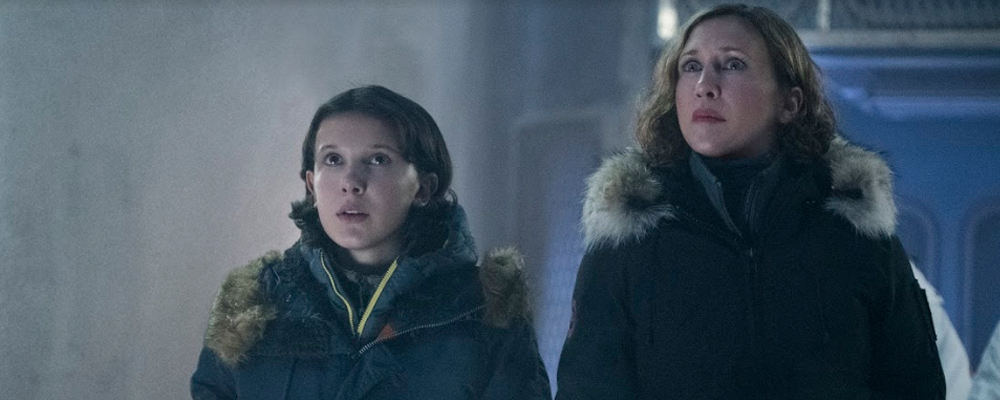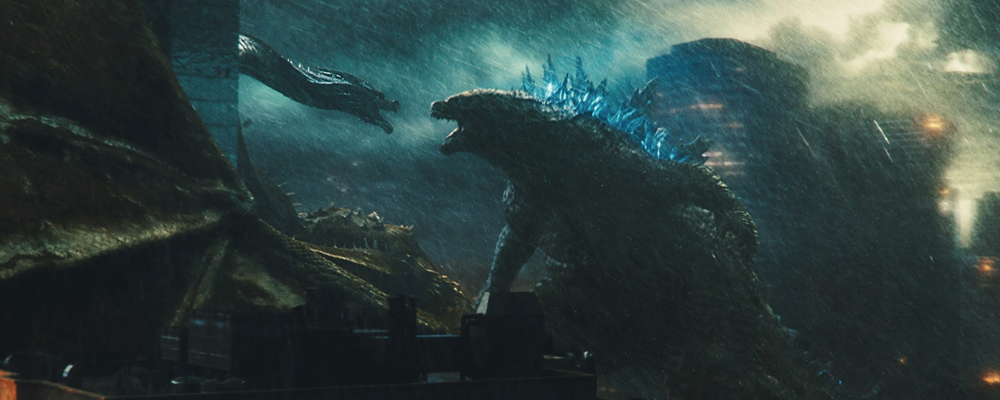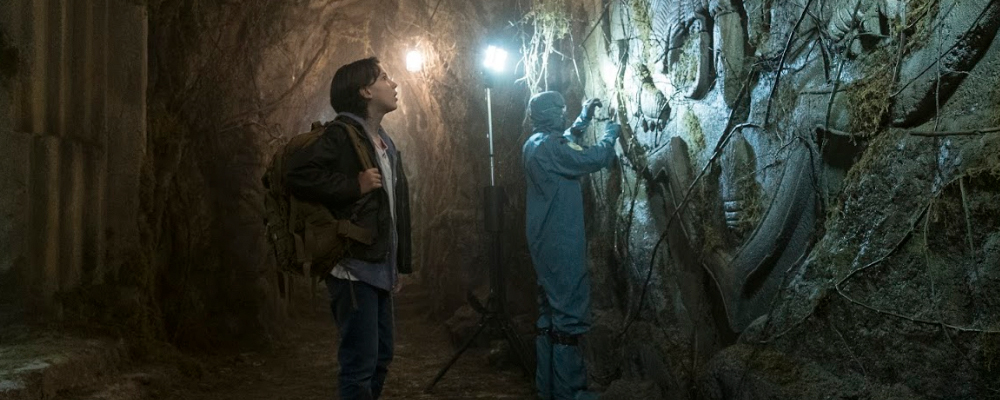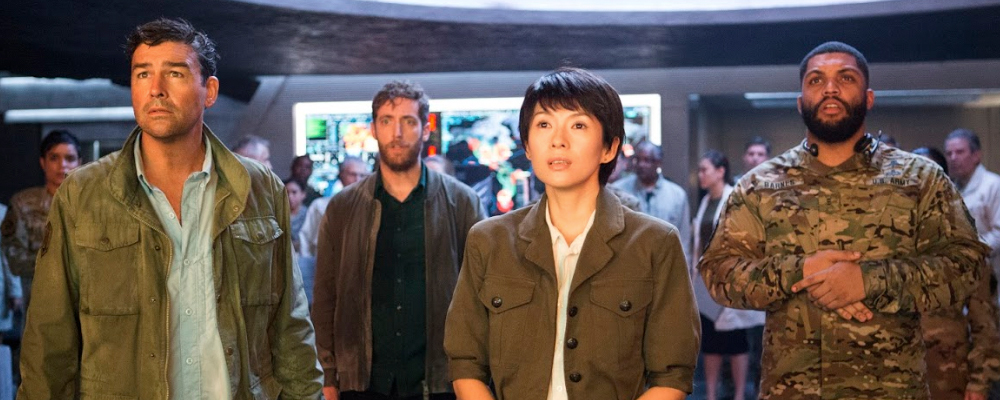‘Godzilla: King of the Monsters’ Stomps and Roars Without a Tale to Tell
Alci Rengifo
You’re almost tempted to use some truly cliché movie poster quotes for “Godzilla: King of the Monsters.” Phrases like “it will obliterate your senses” come to mind. And indeed it will, but not in the best way. This is a loud, stomping, roaring CGI madhouse curiously obscured by rain and snow. Narrative-wise it’s a sequel to the 2014 “Godzilla” by Gareth Edwards, which was a worthy American heir to the Japanese kaiju franchise in its experimentation with scale and using the iconic, giant lizard to subtly address climate change. “King of the Monsters” is all about scale, with little room for humor or brains.
It’s been five years since the events of the last movie and Dr. Emma Russell (Vera Farmiga) finds herself in a distant locale testing a device called “Orca.” With this invention Emma hopes to be able to find a way to communicate with the “Titans,” the giant monsters slumbering all over the globe first exposed when Godzilla emerged from the ocean depths. Emma and her husband, a fellow scientist named Mark Russell (Kyle Chandler), lost their son during Godzilla’s San Francisco rampage in 2014. Left with their daughter Madison (Millie Bobby Brown), the Russells are divided. Mark would like to just kill the beasts, Emma wants to make contact. An eco-terrorist, Jonah Alan (Charles Dance), kidnaps Emma and Madison, demanding he be given Orca. A government task force keeping track of the Titans called Monarch, led by Dr. Ishiro Serizawa (Ken Watanabe) track down Mark to let him know what’s happened. Soon humanity faces cataclysm as a slew of monsters are unleashed, including Mothra, Rodan, and the ultimate threat, the three-headed Ghidorah. But also returning is the main attraction, Godzilla, ready to brawl with radioactive powers.
“King of the Monsters” is the kind of digital spectacle that tries so hard to find a reason to justify its existence. “Godzilla” as a franchise has a very respectable genesis. The original 1954 Japanese film by Ishiro Honda is a memorable work of pop political commentary, with Godzilla representing the terror and specter of the atomic bomb. It was inspired by a U.S. hydrogen bomb test in the Pacific that rattled a population still haunted by Hiroshima and Nagasaki. 30 sequels were to follow. In the U.S. this iconic monster made its digital-era debut with Roland Emmerich’s derided 1998 movie. In 2014 Gareth Edwards made an attempt with more artistry, using campy sci-fi mixed with grand, awe-inspiring images based on imagining the actual perspective of a small human watching an enormous beast emerging from the sea, or from behind a skyscraper. The editing was patient, with Edwards even applying the György Ligeti music Stanley Kubrick used in “2001: A Space Odyssey” to some sequences. Visually Edwards also made many references to climate change, and humanity’s ill-advised attempts to master nature.
By contrast this sequel has no time to be anything other than another explosions fest with the aesthetic of a videogame, meant to do nothing other than to sell a franchise. If it had just been about the monsters it might have worked in a guilty pleasure kind of way, but director Michael Dougherty tries to sell the premise by spending too much time with the boring humans. The characters are recycled from countless other disaster movies, complete with bombs running on timers and hopes to cleanse the world. Like Thanos, the villains are convinced the only way to solve overpopulation and environmental collapse is by wiping out most of us, so the best idea is to unleash all the monsters. Sadly there’s a surprise villain who forces the great “Game of Thrones” actor Charles Dance to become a mere background persona, just standing there uttering a line or two. The performances in general lack the fun self-awareness of other “Godzilla” movies, with straight-faced, long-winded lines about how Godzilla and his fellow Titans are the original gods of mythology, worshipped and feared by past civilizations. This would be more fun if it wasn’t all disclosed in low-lit sets lacking any color scheme other than the blue hue of monitor screens. You can’t help but nearly chuckle when it turns out Ghidora, believed to be the king of the monsters, is actually from space and Ken Watanabe contorts his face and says “a false king!” Mark has no real reason for being here, except to hate on the monsters and then of course realize Godzilla is a good guy. Madison is the required offspring who will eventually get trapped in a destroyed city, seeking shelter from a rampaging Ghidora while mom and dad frantically search for her.
Rehashed plots aside, the true appeal of a movie titled “King of the Monsters” should be the monsters. What we get is a cross between Zack Snyder and that recent, infamously low-lit “Game of Thrones” episode. The second and third acts are designed to shake your chair and slam your ear drums. Doughtery shoots Godzilla blasting through ice caps, Ghidora’s three-headed monstrosity straddling the top of a Mexican volcano, Rodan munching on fighter jets, but everyone is always obscured by snow, wind, rain and smoke. The third act becomes a CGI orgy as Washington, D.C. gets flooded, all is in flames, the monsters fight in the ocean and then obliterate Boston, but we have to squint to get a good view of anything. Godzilla’s first appearance as he battles Ghidora in the arctic will make you wonder either if it’s time to get new glasses or if it’s a sign you need them. Only when the kaijus roar and fire electro currents or radioactive beams from their jaws can we get a decent glance at their digital selves.
What’s worse is how mindless it all becomes. There’s no sense of grandeur, just mind-numbing chaos. The only attempt at delivering something more visually thoughtful is with Mothra, who turns out to be Godzilla’s fellow defender of the planet. When she spreads her wings after emerging from a super cocoon she emits a beautiful, heavenly light, so heavenly that once again we can’t see anything.
After mountains of debris, armadas firing countless missiles, rivers of lava and smoke, we finally get one campy shot of Godzilla holding an opponent’s head clenched by his mighty teeth. It’s not a spoiler to say he’s the actual king of the monsters. In fact the other monsters even bow (not kidding). However the end credits do feature a rousing cover of Blue Oyster Cult’s “Godzilla” performed by System of a Down’s Serj Tankian. It is well-known this is merely a set-up for an upcoming movie where the big G will battle King Kong. It will no doubt be quite the match up, fingers crossed we will be able to actually see it.
“Godzilla: King of the Monsters” opens May 31 in theaters nationwide.







